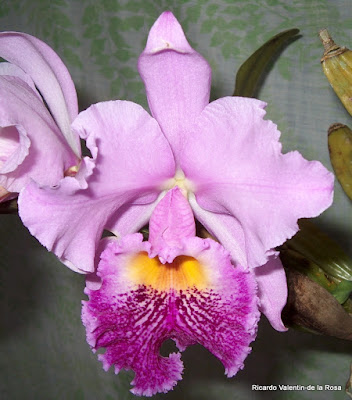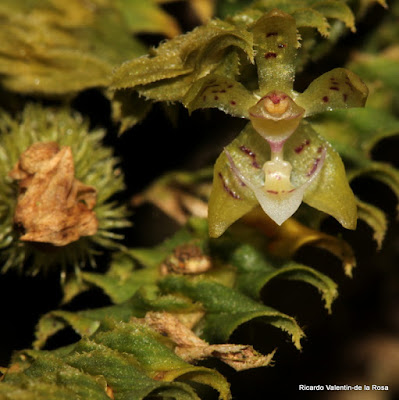Saturday, October 31, 2015
Sunday, October 18, 2015
Cranichis tenuis Reichenbach f. 1865, the population I found in the landslide last year has become larger
Last year I found a few plants of this species growing in nooks and crannies among the rocks of a decades old landslide. In this year blooming season I found many more plants than last year. It seems the conditions at the landslide site has become favorable for the growth of this orchid.
Saturday, October 3, 2015
Anolis gundlachi, the yellow chinned anolis in El Yunque forest, Puerto Rico
I saw this Anolis in el Yunque forest. The anolis was in a shady area under the canopy. It kept moving away and hiding which didn't make taking his photos any easier.
Gonatista grisea, a mantis, seen in the Rio Abajo forest, Puerto Rico
A friend, Alberto Alvarez, noticed this mantis had come into one of the Department of Natural and Environmental resources buildings in the forest. We took photos of the insect and after that firmly but in a gentle manner, invited the mantis to leave the inside of the building and return to the forest. We were successful in this. No mantis were harmed during the taking of these photos.
Dichaea hystricina Rchb. f. 1865 found with multiple blooms "in situ" in El Yunque forest, Puerto Rico.
Yesterday I went hiking in El Yunque forest, in the east of the island of Puerto Rico. The weather was outstandingly horrid for macro photography. Wind gusts at times seemed to reach tropical storm strength. At times it was raining, then sunny, then raining again or drizzling or raining lightly and it changed all the time. Then there was fog and 100% humidity. But who says one has to go out to take photos only in nice weather?
For years now I had missed the peak blooming of Dichaea, but yesterday I hit the jackpot, I found several plants with flowers. Unfortunately, taking photos of the flowers proved challenging due to the wind gusts and the constant rain. Also I had to change lenses, a nightmarish thing to do under such conditions and only having the tiniest rain coat on. Nevertheless I managed to snap a few acceptable photos.
A thing saddened me, it is clear many of the plants succumbed to the long spell of unusually dry weather earlier in the year. This species was very common near Mount Britton. Now only a fraction of the previous population remains in the area. Other species appear to have fared even worse. I could not find Lepanthes in areas where they were quite common, not even a single plant.
Thursday, October 1, 2015
Tolumnia variegata "in situ" in the Rio Abajo Forest, Puerto Rico, a plant that I have been watching since last year.
I have been watching this plant since last year when I spotted it blooming in September. The plant is growing exposed to full sun in a decaying branch. This year has been hard on this plant, there was a prolonged spell of lower rainfall during what is normally one of the wettest periods of the year. This year's growths are smaller and look yellower and wrinkled in comparison with the relatively larger and plumper growths it had in 2014. The inflorescences are smaller and have fewer flowers. However this year it has produced more inflorescences than in 2014. The branch where this orchid grows is dead and is decaying, it remains to be seen if it will last for another year. It is not uncommon, as one walks thorough the forest after a storm, to find branches broken by the wind. It may be that this will be the fate of this branch. Should this happen I will relocate the plant to another branch in the same tree.
Subscribe to:
Comments (Atom)


































